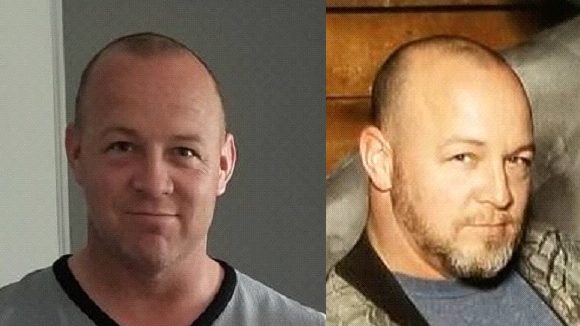Remember This? The end of ‘the crippler’
Posted Apr 13, 2020 02:32:00 PM.
OttawaMatters.com, in partnership with the Historical Society of Ottawa, brings you this weekly feature by Director James Powell, highlighting a moment in the city's history.
April 18, 1955
Thanks to vaccines we no longer live in fear of many infectious diseases that used to stalk the world killing millions each year, and maiming or crippling tens of millions more.
By the early 1950s, Canadian children were routinely immunized against smallpox, diphtheria, whooping cough and tetanus. But several diseases remained to be conquered. One of the most feared was poliomyelitis, also known as infantile paralysis for its propensity to affect the young, or “the Crippler.”
The disease is caused by the poliovirus, a type of enterovirus of the family Picornaviridae. It was first isolated in 1908 by the Austrian researchers and physicians Karl Landsteiner and Erwin Popper. The virus has three serotype versions (PV1-Brunhide, PV2-Lansing and PV3-Leon). All are virulent, though PV1-Brunhide is the most common strain, and the one most associated with paralysis.
In some cases, the diaphragm and chest muscles are affected. Sufferers of this form of the disease need help to breath. In 1927, two Harvard researchers invented the “iron lung,” into which paralysed patients were placed to aid their breathing mechanically. Although most were able to leave the machine after several weeks, some were confined for years, or had to use a portable breathing apparatus.
Polio suffers whose limbs had become paralyzed sometimes recovered their use after a few weeks. However, some many were left permanently disabled. Two to ten per cent of people stricken with paralytic polio died. There is no cure for the disease, only prevention.
Although polio has been around for thousands of years, it didn’t use to have the fearful reputation that it had during the first half of the twentieth century. For the most part, people had acquired a natural immunity to the disease. But as living standards and hygiene improved, the incidence of the disease paradoxically increased. The natural immunity that protected people had been weakened or lost.
According to Christopher Rutty, a medical historian, fears about polio, heightened by publicity, were disproportionate to the risk of catching the paralytic form of the disease. But frightened parents told their children to “regard [polio] as a fierce monster” that was “more sinister than death itself.”
The fact that people at the time didn’t understand the transmission mechanism of the disease (typically faecal-oral) made it all the scarier. You didn’t know what to do to protect yourself and your family. When outbreaks occurred, often during the summer months, health officials in epidemic areas closed cinemas, playgrounds, and delayed school openings.
In Ottawa, when the federal government announced in 1950 that the water from the Rideau River would be temporarily diverted to allow for repairs near its outfall into the Ottawa River, residents of Sandy Hill, fearful of polio-infected flies that might breed in exposed marshes and refuse, lobbied for the repairs to be delayed until after the summer polio season.
People stricken with polio were sent to special isolation hospitals for a minimum of seven days required by provincial law. Their families were quarantined. Ottawa’s Strathcona Isolation Hospital was one of six designated centres for the treatment of polio in Ontario. The other centres were located in Toronto, Kingston, London, Hamilton and Windsor.
The Strathcona Hospital’s “territory” ran from Pembroke to Morrisburg. In 1953, the old hospital was closed when a new East Lawn Pavilion with isolation facilities was opened at the Ottawa Civic Hospital. Seventeen patients were transferred from the Strathcona facility, including one in an iron lung.
Following the election of Franklin Roosevelt at President of the United States in 1933, who was himself a polio survivor, the medical profession in the United States and Canada took aim at the disease.
Funding for research into the development of a vaccine was provided in the United States by the National Foundation for Infantile Paralysis that had its roots in a private anti-polio organization started by the Roosevelt family. The Foundation sponsored an annual March of Dimes campaign supported by Hollywood stars to raise money to find a cure for the disease and to care for polio victims.
In Canada, a parallel organization called the Canadian Foundation for Poliomyelitis was founded in Ottawa in 1949. The Canadian Foundation held the first Canadian March of Dimes campaign the following year. Newspapers across the country carried the photograph of “Linda,” a child polio victim wearing iron leg braces. In Ottawa, twenty-five hundred blue and red checkered collection boxes were distributed in stores, banks and restaurants.
In 1953, North America experienced it worst outbreak of polio in decades. In Canada, there were 8,878 reported cases, mostly in Manitoba and Ontario, with a death rate of 3.3 persons per 100,000 population, far higher than during earlier outbreaks. Ottawa had 100 recorded cases by the end of that year’s polio season with four deaths. To help control the spread of the disease, Dr J. J. Dey, the city’s medical officer of health, advised Ottawa citizens not to drink unpasteurized milk, not to jump into water when the body was tired, and to avoid fatigue. He also told people to stay away from crowds, to keep the house free from flies, and to wash all fruits and vegetables.
More usefully, he advised people to wash their hands frequently, and to boil drinking water if one had any doubts.
Fortunately, by this time, a vaccine was close at hand.
In 1949, Harvard scientist Dr. John Enders discovered that the polio virus could be propagated in the organs of monkeys. The following year, the Polish-born virologist Hilary Koprowski developed an experimental oral vaccine using a live but weakened virus of the PV2-Lansing variety of the disease, and successfully immunized some twenty children in New York State.
Meanwhile, at the University of Pittsburgh, Jonas Salk was working on determining the number of different strains of polioviruses and developing a vaccine using dead viruses that would be effective against all strains of the disease.
Connaught Laboratories at the University of Toronto, supported by a federal grant as well as money provided by the Canadian March of Dimes, was also developing the procedure for producing industrial-size quantities of the polio virus, a necessary and vital step for the mass production of the Salk vaccine. Related work was conducted at the Institute of Microbiology and Hygiene in Montreal. Connaught later supplied much of the virus that went into making the Salk vaccine in North America as well as making the vaccine itself for the Canadian inoculation campaign.
By 1954, Salk who had safely tested his vaccine first on his family and then on 700 volunteers was ready for a large-scale test. He organized a trial involving two million children. Half received a three-shot dose of the experimental vaccine over a period of several weeks with the other half receiving placebos. Most of the children were American. But U.S. authorities offered 50,000 doses to Canada.
Health departments in Alberta and Nova Scotia took up the offer and inoculated thousands of young children.
In mid-April 1955, the results of the trial were announced to a packed conference room at the University of Michigan: polio had been defeated! The vaccine had been 80% effective in protecting children from the disease. The relief was palpable. Immediately, steps were taken to inoculate all children in North America starting with those in Grades 1 and 2.
In Canada, the inoculations were paid for on a 50:50 basis by the federal and provincial governments. Youngsters in Toronto and Pembroke received the first dose of the vaccine in early April even before the official announcement of Salk’s successful mass trial.
The inoculation programme began in Ottawa on Monday, April 18, 1955.
That morning, Grade 1 and 2 students at four public schools (Elgin, Lady Evelyn, Borden and Cambridge) and five separate schools (Ste. Famille, St. Patrick, St. Jean Baptiste, St. Anthony and Christ the King) received their first round of shots. That afternoon, five more schools were visited by teams of nurses. Children in remaining schools received their shots through the week. Parents had to sign a consent form for their children to receive the inoculation with the warning that if the children missed the first shot, they couldn’t receive the subsequent shots.
Across the Ottawa River in Hull, the inoculation programme started in May with children aged two to three years since that age group had been most affected in Quebec during the 1953 epidemic.
In the midst of the roll-out of the continent-wide vaccination campaign, disaster struck. Some children in the United States came down with polio after having received their shots. Several died.
The problem was traced to poor quality control at the Cutter Laboratories of Berkeley, California, one of six American vaccine manufacturers. Their vaccine contained live instead of dead viruses. According to the Journal of Pediatrics, the vaccine had been rushed. The U.S. vaccination programme was temporarily suspended despite the coming onset of the 1955 polio season. In Canada, Health Minister Paul Martin Sr. faced one of the toughest decisions of his life: should the Canadian programme also be suspended as Prime Minister St. Laurent wished?
With all of the Canadian vaccine produced at Toronto’s Connaught Laboratories, and having full confidence in Canadian scientists and doctors, he ordered the Canadian programme to go ahead as planned. No Canadian child came down with polio as result of the vaccine.
By August 1955, the number of polio cases in Canada and the United States had dropped dramatically even though only a portion of children had been immunized.
In November, Paul Martin publicly stated, “I don’t think there can be any doubt that it [the vaccine] has had some effect.”
By 1962, the number of reported polio cases in Canada had fallen to only 89.
In the early 1960s, the Salk vaccine was generally replaced by an oral vaccine using live but weakened viruses developed by Albert Sabin who drew on the earlier work of Hilary Koprowski. The Sabin vaccine was cheap to produce and administer and was very powerful—95 per cent effective after three doses (one for each polio strain). Polio infection rates around the world plummeted. In 1988, the World Health Organization (WHO) launched a campaign to eradicated polio from the world supported by national governments, the U.S. Centers for Disease Control and Prevention, UNICEF, Rotary International and the Bill & Melinda Gates Foundation. In 2000, the Americas were certified as polio free. In 2014, South-East Asia was certified as polio free. By 2016, the number of reported polio cases worldwide had dropped to only 37 located in Nigeria, Afghanistan and Pakistan. The WHO estimates that because of the global vaccination campaign, 16 million people walk today who otherwise would have been paralyzed. Many, many lives have also been saved. However, war and civil strife threaten this achievement. Endemic transmission of the disease continues in the three remaining polio hotspots. With vaccination efforts disrupted in these areas, the Crippler could well return.










